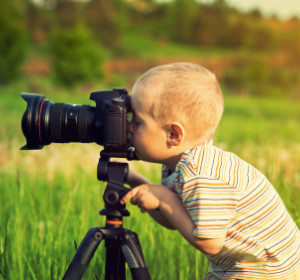 As someone new to digital photography or a beginner with a limited amount of experience, there may seem to be an overwhelming number of photography techniques and functions on your camera. The results of your photography are sure to improve and you’ll enjoy the creative process more if you are willing to try some of those techniques. This PhotographyTalk article presents 8 you may fear or will challenge you in the future and some tips to help you make them a regular part of your digital photography experience.
As someone new to digital photography or a beginner with a limited amount of experience, there may seem to be an overwhelming number of photography techniques and functions on your camera. The results of your photography are sure to improve and you’ll enjoy the creative process more if you are willing to try some of those techniques. This PhotographyTalk article presents 8 you may fear or will challenge you in the future and some tips to help you make them a regular part of your digital photography experience.
-
Taking pictures of strangers, especially when traveling, is one of these challenges. This may be less a fear than not knowing the proper technique to approach a stranger for a picture. The best approach is to be respectful and ask his or her permission first. When photographing strangers during your travel, you want to keep in mind the Golden Rule and act in their country, as you would expect them to act in yours. This is also a special learning opportunity and human moment when you genuinely interact with the person you want to photograph. In other words, don’t treat them like subject matter, but as another human. Make sure you smile and look him or her in the eyes. Invite him or her to lunch, if appropriate. Exchange email addresses, so you can send him or her copies of the photos.
-
Many beginner photographers are afraid to fill the frame with their subjects. You’ve probably done it and you’ve seen it hundreds of times: photos with people posed in the distance, but you can’t tell who they are. The best way to photograph people is to fill the frame with them, so your photos reveal the details of their facial features and their personalities and relationships. It also gives your photos more emotional impact. You can accomplish this three ways: 1) use your zoom lens to shoot tighter images; 2) move closer to your subject; and 3) use photo-editing software to crop the photo, so your subject fills the frame.
-
The Auto mode becomes so easy and convenient that many photographers seem to forget about all the other shooting modes on their camera. Auto mode chooses ISO, shutter speed, aperture, white balance, focus, flash settings, etc.; however, it can’t create, which is your contribution to the photographic process. When you learn how to use Portrait, Landscape, Sports or whatever selection of shooting modes your camera offers, you are more likely to shoot the best images of these types.
-
If you want to be a better digital photographer, then you can’t be afraid of analyzing your photos according to the digital data provided by your camera’s histogram. Understanding histograms has two purposes: to learn another tool that comes with your camera and maybe, more importantly, to train your digital photographer’s eye to “read” the images you’re about to shoot in a way different than just looking at them through your viewfinder. Typically, “histogram” is a selection on the menu of your camera system.
-
The world and your life may be full of colors, but when it comes to digital photography often a black and white image reveals more. When you learn about contrast, light, perspective and texture, you’ll discover that black and white images can tell more of the story of the person in a portrait or reveal qualities of objects or places that color cannot.
-
Many photographers also seem to forget there are many more shooting positions than standing. For example, bending your knees, or even standing on your knees or sitting on the ground, will immediately make your photos more creative, unique, exciting and dramatic, and more people will want to look at them.
-
Don’t be repelled by gray, overcast days. Sometimes, the even, diffused light on a gray or cloudy day can show more details than a bright light that causes more contrast, hiding some details in highlights and shadows. A gray day is often a better environment to shoot black and white photos, as suggested in #5 above.
-
Don’t head indoors with your camera just because the sun has slipped below the horizon. Professional photographers, and especially Hollywood moviemakers, consider twilight the “magic hour.” This is the period of time from just after a complete sunset, when the sun’s rays are still providing light, to when the sky is mostly dark blue to black. Learn how to shoot during twilight and you’ll capture some truly remarkable images.
